#Imperial Equestrian Army
Note
Oh, cool! If that's the case, I suppose I should probably take a visit there sometime.
Also, forgive my ignorance, but what type of leaf is that insignia?
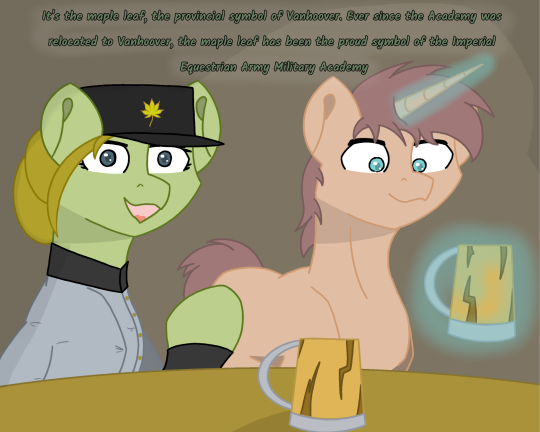
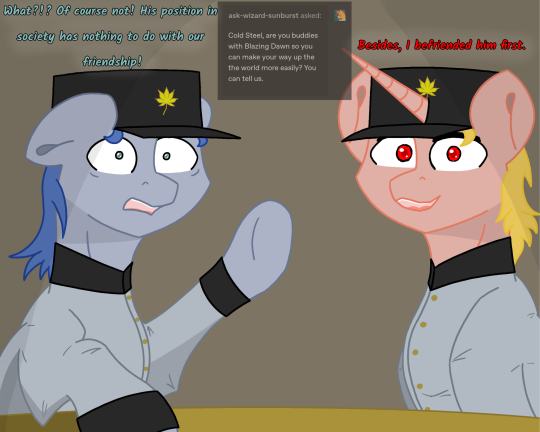
Blazing Dawn: I needed help in Mathematical Sciences and so I befriended Cold Steel over here!
----------------------------------------
Chapter 1: Last Cadet Days
Part 20
----------------------------------------
Guest Artist: @void-art-blog
#ask-coldsteel#Cadet Cold Steel#Blazing Dawn#Lime Light#Equestrian Grand War#Pre-war period#Imperial Equestrian Army#Imperial Equestrian Military Academy#ask-shady-krowne#ask-wizard-sunburst#MLP#My Little Pony#OC#Earth Pony#Unicorn#Ask Blog#MLP Art#Digital Art#Question No. 18#Question No. 19
25 notes
·
View notes
Text
sejanus plinth: the name & what it says about fate vs. choice


sejanus plinth is the namesake of the roman solider, lucius aelius sejanus. i've seen many people question why suzanne collins would choose to name sejanus plinth after this historical figure, and i think her reasoning was rather clever. their similarities are few, but striking: both of them have fathers name strabo, both came from humble riches and both of them were eventually tried for treason. save for that, it seems everything about their narratives were different. i believe collins did this as a way to invite conversation surrounding the topic of destiny vs. choice.
like sejanus plinth, lucius aelius sejanus was born into opportunity because of his father, lucius seius strabo. the roman sejanus was born into the equestrian class, which was one of two upper classes in roman republic. the other class was the patricians. the equestrian class were beneath the patricians (much like how district two, while wealthy, was still seen as below the capital). lucius seius strabo distinguished himself by entering not one, but two, of the highest ranking positions that could be afforded to people in his class: the governor of egypt & praetorian prefect (the praetorian guard was, essentially, a unit of the roman army meant to bodyguard the emperor and their family, as well as watching over civilians). while there is much to be said about the parallels between the equestrian class and district 2--and how both worked to protect the higher class, while remaining nonthreatening to them-- that is a post for a later day.
unlike sejanus plinth, the roman sejanus grasped readily onto the opportunities his father, strabo, had gotten for him. on the back of his father's hard work, roman sejanus rose to power in the praetorian guard, eventually becoming one of the praetorian prefects, alongside his father. this is where the narratives of sejanus plinth and lucius aelius sejanus begin to greatly divide. though sejanus plinth had been readied to take over his father's empire from a young age (being taught how to shoot guns, being the sole heir), he did not take readily to the idea, especially when they were transferred to the capital. sejanus plinth did not see what was happening the capital as desirable, whereas lucius aelius sejanus found himself increasingly power hungry and he did wish to increase his ranking. eventually the roman sejanus outdid his father in his accomplishments. he gained the trust of the emperor tiberius and rose to the position of praetor--a ranking not usual for someone of his class background. this earned him enemies amongst the patrician class and the imperial family, with one of them being drusus julius caesar, the very son of emperor tiberius himself. drusus did not like sejanus because he was encroaching on his grounds, seemingly taking his position as his father's successor in everything but name. sejanus even went as far as trying to secure these ties by marrying his four year old daughter to one of tiberius' family members, but couldn't because the boy died. however, sejanus' ambition did not let him stop there. eventually he poisoned drusus slowly after seducing his wife and making a conspirator out of her. the slow nature of the death allowed it to be ruled natural causes.
in the end, roman sejanus was tried for treason when tiberius began to grow suspicious of sejanus and his growing influence. whlle sejanus plinth shares the same end as this sejanus, the nature of their downfalls cannot be more differerent. sejanus plinth was tried for treason, yes, but hardly for his growing influence, and certainly not for his desire for power. sejanus plinth was hung because of what the capital deemed rebel conspiracy. but plinth died, not because he wished to be powerful, but because he wanted the districts to be free. while sejanus plinth might've been destined to his beginning and fated to his ending, he made choices along the way that drove him away from the path that his predecessor took. he continually chose empathy and kindness, and he could not find comfort in his father's successes and his riches, knowing how many were being punished for n good reason.
the differences between sejanus plinth and lucius aelius sejanus are just as important as their similarities -- if not more -- because they bring up a conversation suzanne collins flirts with a lot in the ballad of songbirds & snakes, which is: how much of who we become is pre-decided and how much of it is choice? with sejanus, we see him rebelling every step of the way, even, it seems, in terms of his 'fate.' had he done what he'd been meant to do, sejanus might very well have lead a long and prosperous career alongside coriolanus or someone like coriolanus, rising to power despite the fact that the power and position was never meant for someone like him. he might've died the very same way, sure, but he'd be remembered a whole lot differently.
sejanus plinth, unlike coriolanus snow, knew that choice was important -- he knew that, though there are factors that certainly help pre-decide what we become, they are not the end all, be all. sejanus plinth's namesake was power hungry and ambitious, ready to take all that could be given to him and rise in the ranks no matter the costs, whereas sejanus plinth was kind-hearted and had no interest whatsoever in being powerful. all he wanted was justice and peace, and for people to stop killing children. they both died because someone feared they could be too powerful, but they were incredibly different people.
#sejanus plinth#hunger games#the hunger games#coriolanus snow#the hunger games analysis#the ballad of songbirds and snakes#suzanne collins#i worked so hard on this lmao
59 notes
·
View notes
Text
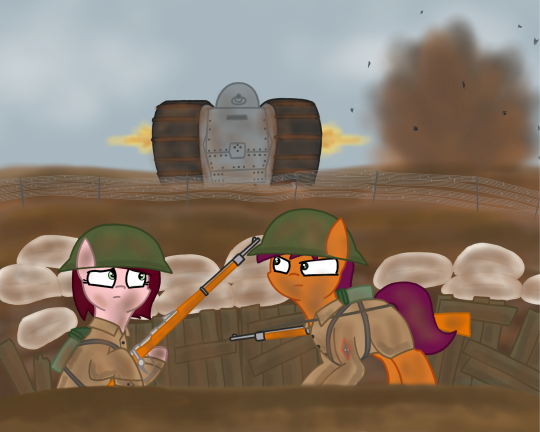
Troopers of the Imperial Equestrian Army's 33rd Division hunker down in their trenches as a Lunar Republican Army D5 Armored Crawler creeps towards their positions at the Ponyville front.
----------------------------------------
Featuring:
Jassy from @techbro-arts and @askpokeeosin
#Jassy#techbro-arts#askpokeeosin#Art#Random Art#MLP#My Little Pony#Earth Pony#Earth Ponies#Equestrian Grand War#Frist Grand War
21 notes
·
View notes
Text
I'm really enjoying Mary Beard's systemic approach to the imperial period of 30 BCE-192 CE. In particular, she points out that for all the tales of individual emperors' faults and virtues, the structure and administration of government itself remained pretty much the same.
Or, as Blue from Overly Sarcastic Productions put it, the imperial system concentrated all the crazy in one guy so the rest of the empire could keep humming along.

Even if you assume all the allegations about, say, Caligula are true, his carnage would've been limited to the senatorial class, and there are hints that he was more popular with the general public:

Now, the senators and bureaucrats were the ones writing history books. So when an emperor was insulting or oppressive toward that class, they were likely to record him as a tyrant, and they didn't pay much attention to the experiences of commoners. (Or, like Josephus above, they were dismissive.)
This was further colored by the fact that emperors often had an incentive to make their predecessors look bad, especially if that predecessor died through violence. Characterizing Caligula as a monster made his assassination and Claudius' ascension appear justified; same goes for the death of Nero and ascent of Vespasian. Whereas Trajan, Hadrian, Antoninus Pius and Marcus Aurelius succeeded peacefully via adoption, and looked more legitimate by glorifying their predecessor. The senatorial records and public discussion would have shifted to reflect this, and curry favor with each emperor.
This is also likely the source for much of the positive tradition surrounding Brutus, Cassius, Cato and Pompey. If you were a senator living under Emperor Domitian, who kept senators on a tight leash and suppressed dissent, the imagery of killing a dictator would be appealing indeed - even if most of the assassins had more self-serving motives, and Caesar's death set off another 14 years of civil war.

Much of this system can be credited - and blamed - on Augustus. Beard points out that the imperial bureaucracy grew in size from the reign of Augustus to Commodus, but didn't change in nature. The same system was used to promote and punish senators, equestrians and freedmen; the praetorian guard and army worked the same way (and mostly stayed under the emperor's thumb); even the fuzzy rules of succession that inspired so many conspiracies and murders never got hammered out.
And apart from a brief civil war in 68-69 CE, the first two hundred years of the government Augustus developed were very stable, and mostly prosperous, even when the emperor was an idiot or got killed. That's not quite as good as the republic's record, but still pretty solid for a pre-Renaissance state other than China. (The Han dynasty alone lasted a sweet 424 years.)
Anyway, SPQR ends with the emperor Caracalla, whom I haven't gotten to yet. So the book doesn't cover the Crisis of the Third Century or how the principate (the Augustan government) differed from the Dominate (which includes Diocletian, the tetrarchy, Constantine, Julian and Theodosius, among less notable rulers).
(Mary Beard, SPQR, chapter 10)
14 notes
·
View notes
Text
Friedrich Wilhelm Freiherr von Seydlitz[Note 1] (3 February 1721 – 8 November 1773[1]) was a Prussian officer, lieutenant general, and among the greatest of the Prussian cavalry generals. He commanded one of the first Hussar squadrons of Frederick the Great's army and is credited with the development of the Prussian cavalry to its efficient level of performance in the Seven Years' War. His cavalryman father retired and then died while Seydlitz was still young. Subsequently, he was mentored by Margrave Frederick William of Brandenburg-Schwedt. Seydlitz's superb horsemanship and his recklessness combined to make him a stand-out subaltern, and he emerged as a redoubtable Rittmeister (cavalry captain) in the War of Austrian Succession (1740–1748) during the First and Second Silesian Wars.
Seydlitz became legendary throughout the Prussian Army both for his leadership and for his reckless courage. During the Seven Years' War, he came into his own as a cavalry general, known for his coup d'œil, his ability to assess at a glance the entire battlefield situation and to understand intuitively what needed to be done: he excelled at converting the King's directives into flexible tactics. At the Battle of Rossbach, his cavalry was instrumental in routing the French and Imperial armies. His cavalry subsequently played an important role in crushing the Habsburg and Imperial left flank at the Battle of Leuthen. Seydlitz was wounded in battle several times. After the Battle of Kunersdorf in August 1759, he semi-retired to recover from his wounds, charged with the protection of the city of Berlin. He was not healthy enough to campaign again until 1761.
Frederick rewarded him with Order of the Black Eagle on the field after the Battle of Rossbach; he had already received the Pour le Mérite for his action at the Battle of Kolin. Although estranged from Frederick for several years, the two were reconciled during Seydlitz's final illness. Seydlitz died in 1773, and Frederick's heirs included his name on the Equestrian statue of Frederick the Great in Berlin, in a place of honor.
1 note
·
View note
Text
Central Asia crucial in Ukraine’s imperial chimera battle
There is much more in common between Ukraine and the states of Central Asia than it seems. As Kyiv is fighting the imperial chimera, staying away is not an option for Central Asia.
by Andriy Yermak
Published on April 24, 2023
Russian aggression against Ukraine did not simply break the rule-based world order established after World War II. The invasion became another step in an attempt to get international relations back to the 19th century, to the times of the Vienna system, when Russia employed the right of conquest to become the leading "conductor" of the "Concert of Europe" and successfully played the "great game" in Central Asia.
The north-south dividing line passing through the northern Black Sea, the Caspian Sea and abutting the Altai, remains critical to the implementation of the Kremlin's plans even now. Strictly speaking, it has been a pillar of Russian imperial policy. However, for the nations that resumed their independent state-building after the Soviet Union dismantling, Russia lost its appeal as a regional center of gravity. Not least because it failed – did not try, actually – to offer its neighbors any integration project that would provide for an equal partnership and prevent Russia from gaining the position of the primary, or even the only beneficiary. The Commonwealth of Independent States (CIS), the Russian-led Collective Security Treaty Organization (CSTO), and the Eurasian Economic Union (EEU) – all these formats of multilateral cooperation in their current form are aimed at preserving this exclusivity.
However, for the Central Asian states, historically, multi-vectoring is a natural way of communicating with the outside world. Ukraine also aspired to be a multi-vector – until Russia's imperial swagger forced it to make a final choice.
Not only Ukrainians face Moscow's territorial claims as revenge for the lack of piety towards its ambitions. Both the former and the latter are known perfectly well to our friends in Kazakhstan. Both Ukrainians and Uzbeks experienced gas blackmail in dead of winter. Besides Kyiv, Bishkek is perfectly aware of the bad odds to get the Kremlin's proteges extradited and tried. In both Dushanbe and Ukrainian Crimea, they know what a powerful tool of pressure the Russian military base may be.
On top of that, I believe both a stud farmer in the Ashgabat area and the Bucha equestrian club owner agree on the kind of punishment that racehorse murderers deserve. Meanwhile, a joke about Moscow's habit of burying the logistics and energy transport projects created without Russia does not need to be explained to anyone living anywhere along the ancient Silk Road. And commonly understood is sarcasm toward "protecting the Russian-speaking population."
There is much more in common between Ukraine and the states of Central Asia than it seems. Of course, we are not talking about gastronomic sympathies for manti, shawarma, borscht and dumplings. Yurts of invincibility in Ukrainian cities are a reminder of the joint liberation struggle after the collapse of the Romanov empire, of joint pain from the Holodomor in the fertile steppes of the West and East, and of the desire to protect one's way of life. Ukrainians highly appreciate this help. Special thanks for voting on Ukrainian resolutions at the U.N. We realize that in certain circumstances even "abstaining" is a manifestation of courage, not to mention a systematic voice "pro."
'Russian peace' with guns
I know that information about events in Ukraine often reaches the states in the region with huge distortions due to the overwhelming Russian presence in their information field. Sometimes it is not easy to understand what is happening. But there is a way out: Watch the Soviet "White Sun of the Desert" movie again. Ask yourself how the Red Army soldier Fyodor Sukhov was brought from Samara to Turkestan. What was he doing there? The answer is on the surface: He was doing perfectly the same thing as Alexander Sukhov from Tver, who was killed in Ukraine last year. He brought us "Russian peace" with weapons in his hands. Simply put, he was a conqueror, not a liberator.
What is happening in Ukraine is not a proxy conflict between Moscow and Washington, as presented by Russian propaganda. We are the people, not proxies. Everything is simple in this war: There is an aggressor and there is a victim of aggression. The victim has the right to defend himself in all ways available. In particular, seeking support abroad. But we would not need it if Russia were not obsessed with "greatness." In the modern world, greatness is measured by the level of medicine, the quality of education and cutting-edge technologies, and not by conquests. However, people from the past cannot comprehend this benchmark.
Russia has not been able to impose its will on us either in nine years of creeping aggression or in more than a year of the all-out invasion. Moreover, being unable to win a decisive victory on the battlefield and being subject to increasing sanctions pressure, Russia is getting weaker. It feels like the growing imperial overstretch. In fact, it has already irrevocably lost its place in the superpowers league.
It means that further degradation of the international security system is imminent. In particular, in Central Asia. Moscow consistently interferes with integration processes within the region to retain its decadeslong role of arbiter. This is nothing but a continuation of the imperial practice of drawing borders without taking ethnic maps into account.
Moscow has established close relations with the Afghan Taliban, despite the fact that Russia designates it as a terrorist organization. Today, many are inclined to consider such convergence as a stabilizing factor. But what will happen next? Given the long history of the Kremlin's use of radical movements, the question is easy to answer. Trying to build a "cheaper" empire, President Vladimir Putin-era Russia repeatedly resorts to the racketeering strategy: The Kremlin tends to create a problem, and then offers its (by default – non-alternative and very expensive) services to solve it.
Kyiv fighting for restoration
Ukraine is fighting for the restoration of a world living by the rules. We strive to build an international relations system ensuring safety for all and not just the premier geopolitical league members. We aspire to a reliable peace where the right to determine one's future is guaranteed by effective security mechanisms, and the aggressor is certainly punished. A comprehensive sanctions policy against Russia and those who, for reasons of financial or political gain, help it circumvent restrictions is one of the elements of this system. Justice needs protection, and we thank all the countries, including those of Central Asia, that block the terror state's attempts to restore its military strength undermined in Ukraine.
Russia is finally discrediting itself as a mediator between East and West. Instead, Ukraine has every chance to be at global crossroads – both as a key element of Eurasian security and as a transit state. Given the scale of destruction caused by the Russian barbarians – as the world's largest construction site, we are open to offers.
Russians are so fond of German historian Karl Hampe's saying, "History knows no 'if,'" that they attribute the quote to Joseph Stalin with their usual contempt for intellectual property rights. But hardly anywhere else in the modern world this aphorism is tried to be refuted more than in Russia itself. During Putin's "reign," alternative history became both the most popular literary genre and a leading imperative in politics. The Kremlin's logic is not to restore the empire's long-lost glory, might and greatness, but to create the empire's image in modernity.
Ukraine's logic is that this aggressive chimera can only be opposed by truth, a real partnership and dialogue on equal terms, based on mutual respect of cultures and sovereign states. We offer an open platform to reform international relations, and we would appreciate the Central Asian countries joining the sponsors of a new, fairer and safer world order for the common good.
Andriy Yermak is the head of the Office of the Ukrainian Presidency.
0 notes
Text
Emperor Gallienus, circa 253-268
Following restoration, the coin is unfortunately worn, but luckily retained enough details to identify it as Emperor Gallienus, who was co-emperor with his father Valerian from 253 to 260 and alone from 260 to 268.

There was slight rust on the reverse, which I treated with Renaissance wax to prevent deterioration of the coin.

I found a similar coin (https://www.vcoins.com/en/stores/romae_aeternae_numismatics/136/product/gallienus_silvered_antoninianus_provi_avg_providentia_siscia_ric_580_vf/983277/Default.aspx) which I used for identification, and learned that the figure on the reverse of the coin symbolizes providentia. Providentia is the personification of foresight. Used on coinage to advertise emperor is aware of the needs of the empire and its population and is taking the proper measures to meet them, usually referring to the grain supply or sometimes the birth of imperial children.
Per Britannica, Gallienus was famous for a reduction of civilian control over the military, because—breaking with a tradition of some seven centuries—he transferred the command of the Roman armies from the senators to professional equestrian officers. At the same time, he expanded the role of the cavalry in warfare by creating a mobile cavalry reserve, which was to become the nucleus of the field army of the later empire. Unfortunately in 268AD, while besieging the insurgent general in Milan, Gallienus was murdered by his senior officers
0 notes
Photo
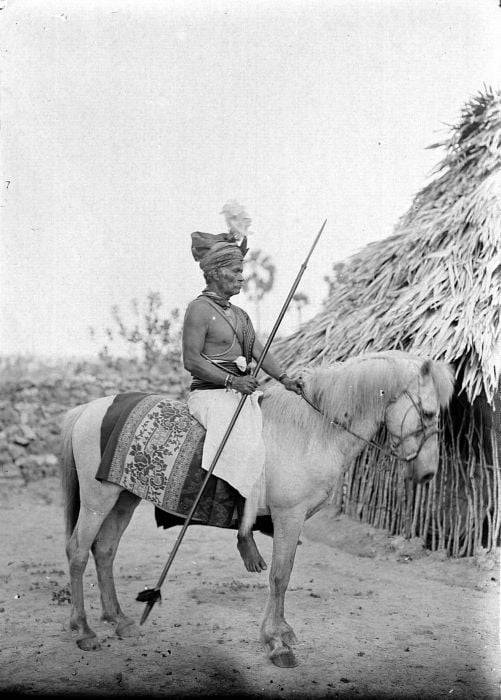
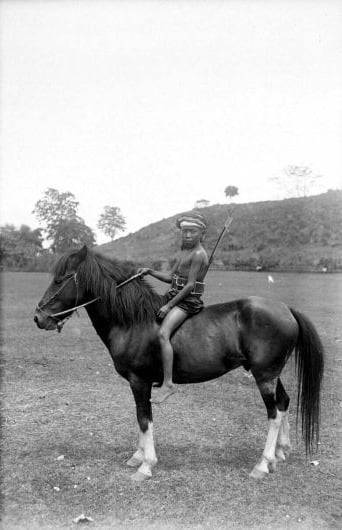


“Per capita, Indonesia may have the most pony breeds of all countries. The ponies of Indonesia are quite similar in ancestry, but have been shaped over the years to meet local needs from island to island.
The origin of Indonesian ponies is very ancient. Groeneveld cited a great deal of literature regarding China in his book, Het Paard in Nederlandsch-Indie (1916). During the T’ang Dinasty (627 – 649) the Chinese presented several horses to the King of Java as gifts. Later, during the Yuan or Mongol Dinasty (1280 to 1736) the imperial Chinese cavalry landed near Tuban, in Java. When they were driven away by Raden Wijaya’s army who founded the Kingdom of Majapahit, the defeated cavalry left their though and precious mount behind. From this sources, it was concluded that Indonesian ponies were descended directly from Mongolian, from which most Chinese horses are in part descended. It is also known that China obtained horses centuries prior to that time from Ferghana (Turkmenistan) and other area of western Asia to cross with their native horses. Exact identification of the horse breeds introduced by the Chinese to Indonesia is not possible yet.
Indian subcontinent people also took horses to Indonesia, but the race of the horses is unknown. According to Groenveld, they had Asian and African blood. During the eighteen and nineteen century, the Dutch took horses to Indonesia that were native to Arab and Persia.
The Indonesian ponies can be defined as mixtures of Mongolian horses with Western Asia or Oriental blood. The highest percentage of Arabian blood is found in Sandel horses and the least amount is evident in the Batak and Timor animals.
Most of the Indonesian horse breeds aren’t actually horses at all, they are technically ponies. But now there is a new breed that can be called as real horse. In fact, the official name of the new breed is The Indonesian Standard Race Horse or Kuda Pacu Indonesia (KPI). KPI is the fruit of decades of painstaking effort to create a race horse breed suited to Indonesian climate, and to eradicate the painful dependency to the expensive yet vulnerable foreign racehorse.
KPI is a mixture of carefully selected Indonesian native mares with imported Thoroughbred stallions. A good KPI needs to have the resilience and toughness of Indonesian native breeds, as well as the speed and the height of the hot-blooded Thoroughbred. According to the Indonesian Equestrian Sports Association (PORDASI) which adopted the creation of KPI as their program in 1970s, the ideal ratio of a KPI is around 12,5 % to 6,25 % Indonesian native gene and the rest Thoroughbred blood. This indo-thoroughbred stands 15 to 17 hand height. The posture and conformation of KPI is almost identical with Thoroughbred. In some cases, KPI even looks more elegant than the average modern Thoroughbred.
In some horse farms, mostly in Java, breeders also take pleasure in breeding purebred Thoroughbred. This Indonesian Thoroughbred (TB IND), kept for racing and breeding, is important for maintaining the quality of the new breed, KPI. Lately, some equestrian clubs also try their hands on breeding Warmblood sport horse.
Source: International Encyclopedia of Horse Breeds by Bonnie L. Hendricks and https://kudakhatulistiwa.wordpress.com/.”
Reposted from Horses of Gili
#ponies#indonesian ponies#horse breeds#sandal pony#batak pony#timor pony#java ponies often look like they have dongola influence but who knows
90 notes
·
View notes
Photo

Join us for a virtual tour of Jacques-Louis David Meets Kehinde Wiley! Created by Lisa Small, Senior Curator, European Art, Eugenie Tsai, Senior Curator, Contemporary Art , and Joseph Shaikewitz, Curatorial Assistant, Arts of the Americas and Europe.

The exhibition places two iconic paintings in dialogue: Kehinde Wiley’s Napoleon Leading the Army over the Alps (2005) and its early nineteenth-century source image, Jacques-Louis David’s Bonaparte Crossing the Alps (1800–1) from the Château de Malmaison.
Displayed together for the first time, these two heroic images provide an opportunity to explore how constructions of power, representation, race, masculinity, and agency are enacted within the realm of portraiture.
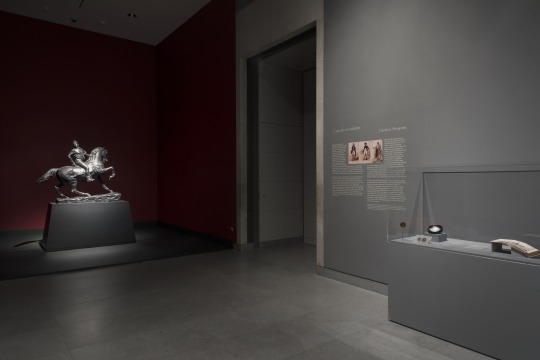
The introductory gallery features Wiley's Rumors of War—a smaller version of the monument he unveiled in Times Square last fall—which shows his continued interest in equestrian imagery (or sitters on horseback).

Here, he adapted a contested statue depicting the Confederate General J. E. B. Stuart installed on Monument Avenue in Richmond, Virginia, and transformed the sitter into a valiant young Black man whose likeness is a composite of several young men.
In Wiley’s words, this work functions “to expose the beautiful and terrible potentiality of art to sculpt the language of domination.”

This case displays several 18th and 19th-century objects from the Brooklyn Museum collection that show how Napoleon and his achievements were celebrated in visual culture during and after his rule.
Napoleon entered the military at 16, became a full general in the French Revolutionary Army at age 24, and in 1804, he crowned himself Emperor of the French.

This medal struck in 1806 aligns his profile with the early 9th-century Roman emperor Charlemagne. A savvy political propagandist, Napoleon liked to connect his reputation and image with ancient imperial glory.

David made the same connection in his painting, inscribing “KAROLVS MAGNVS” (Latin for Charlemagne) in the rocky foreground.
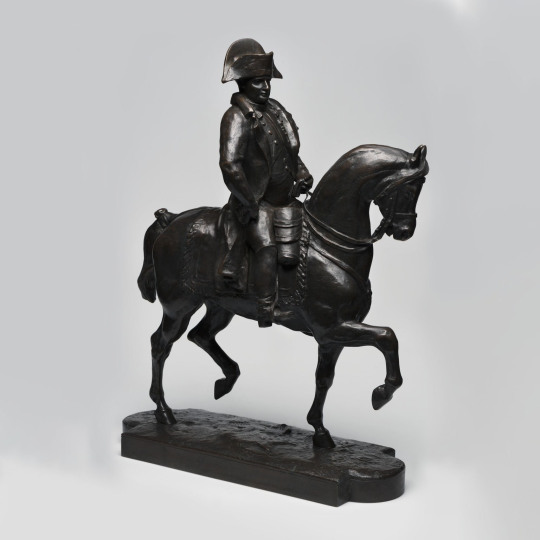
The equestrian format of Antoine-Louis Barye’s bronze sculpture of Napoleon echoes the same ancient visual tradition for portraying rulers David used in his painted portrait, and that Wiley continues in his painting and sculpture.
Barye made this sculpture in the 1860s, long after the end of Napoleon’s reign in 1815, during the rule of his nephew, Napoleon III, who sought to revive and connect to his uncle’s imperial image and legacy.

Visual propaganda goes both ways! This small section features several early 19th-century satirical prints that subverted Napoleon’s heroic persona by belittling his character and portraying him as a villainous despot.
The British, who were constantly at war with France during this period, were especially good at creating scathing, satirical images of Napoleon, whom they gave the unflattering nickname “Boney.”

In this 1806 etching, James Gillray highlights Napoleon’s penchant for installing loyal rulers across his growing empire by showing him pulling his “imperial gingerbread” from the “new French oven” while behind him his Foreign Minister Talleyrand kneads the dough to make more. If you look to the right, you’ll see a favorite detail: a group of “Little Dough Viceroys” waiting to be baked.

The main gallery focuses on the David and Wiley paintings. Made two centuries apart, they highlight the connection of image-making to power, serving as a reminder, in this age of social media and celebrity, of the relationship between visual culture, dominance, and history.
The pairing offers a timely examination of the European canon, while also showing how historical artworks can speak to issues of race and power in the present moment.
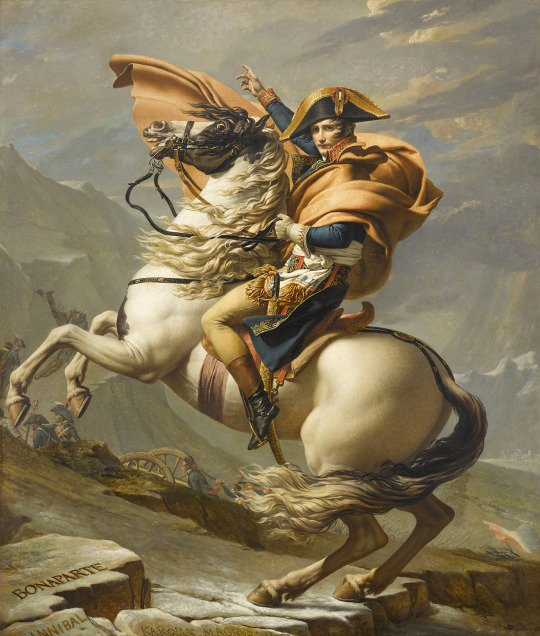
David reimagines Napoleon crossing the Alps in 1800, on his way to recapture Italian territory lost in war with Austria. With him was an army of 4,000 soldiers who pulled heavy artillery up 6,500 feet.
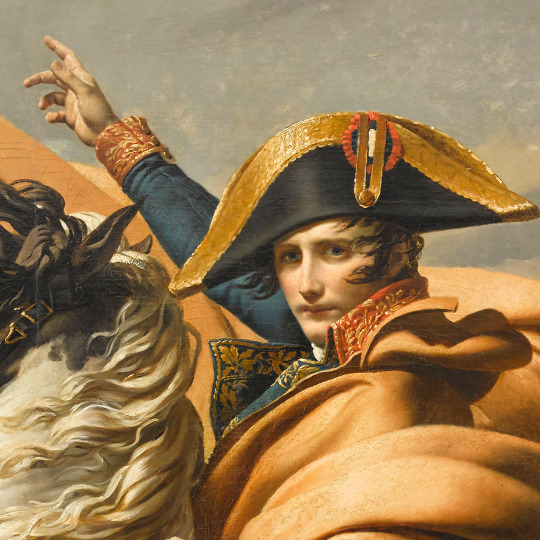
Reality check: Napoleon didn’t actually lead the charge across the Alps wearing a fine uniform and riding a white horse, but in a grey overcoat and riding a donkey.
This idealized image was meant to serve as an emblem of power, victory, and authority. It is pure propaganda, and has become a famous symbol of military glorification and the cult of personality.

King Charles IV of Spain commissioned David’s painting, but Napoleon himself liked it so much that he asked the artist to create a replica of it for him. We have on view the first version, which went to Spain.
Fun fact: In 1808 Napoleon made his brother Joseph the King of Spain, and he took ownership of David’s painting. When Napoleon lost power in 1815, Joseph went into exile in the US and took the painting with him to New Jersey, where it remained for at least 15 years!

Wiley engages with the grand tradition of European portraiture and its ability to construct images that convey the power of the sitter. His work shows his practice of drawing from older paintings, preserving the pose and composition. Here he swaps the heroic figure of Napoleon for a Black man, an everyday civilian, to highlight the fact that he and other brown and Black people have been written out of this history.
Part of his 2005 series “Rumors of War,” the painting is emblematic of Wiley’s complicated engagement with European history and portrait painting, showing, as he has said, that he’s “drawn toward that flame and wanting to blow it out at once.”
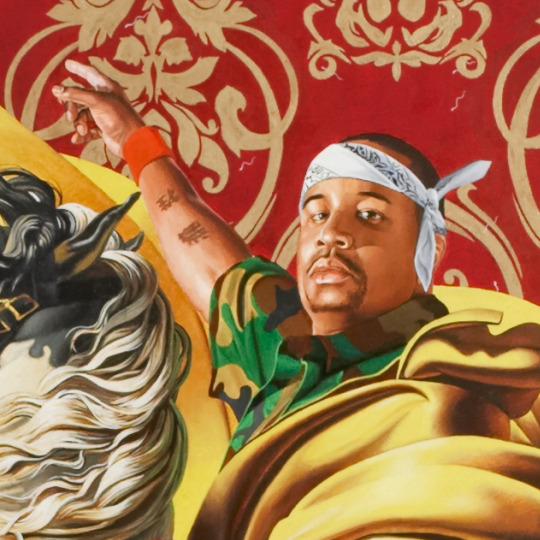
Wiley replaces the figure of Napoleon with a contemporary Black citizen. Wiley chose him using his technique of street casting, in which the artist invites passersby into his studio to pose for paintings.
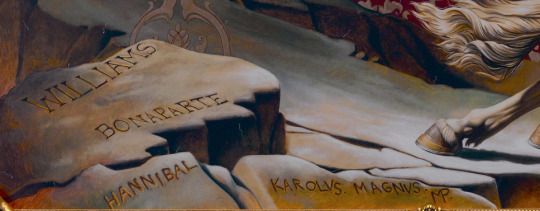
The sitter’s last name “Williams” joins the names of other military leaders in David’s original composition.
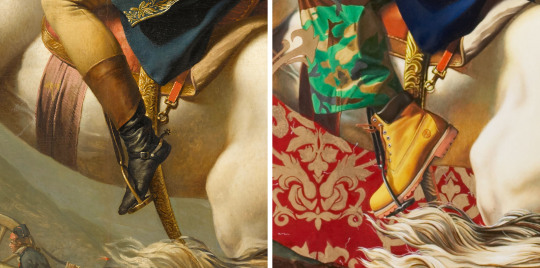
Wearing fatigues and Timberland boots, the sitter literally and figuratively redresses history. Although his camo attire updates the Napoleonic uniform, his style has more to do with what the artist has called “Brooklyn bravado” more so than an overt reference to the military.

Exhibition designer Lance Singletary created an opulent, theatrical space for the two paintings, including a central curtain swag that evokes the Napoleonic era. The golden crest, created by our talented graphic designer Paige Hanserd, combines David and Wiley’s initials enclosed by laurel branches.

The design is a nod to the laurel-wreath crown that Napoleon wore at his coronation and the popularity of the laurel motif in French Empire design.

This book in the last gallery shows Napoleon and his first wife, Joséphine Bonaparte, on the grounds of Malmaison, the couple’s residence from 1800–02. During this period, Napoleon reinstated slavery in France’s Caribbean colonies—a practice that had been abolished by the French Revolution in 1794.
Some historians believe that Napoleon’s decision was influenced by Joséphine, who was born and raised in Martinique to a family that made its wealth through a sugar plantation and the labor of enslaved peoples.

The final gallery also includes this sculpture by Wiley in the Brooklyn Museum’s collection. The work draws on an eighteenth-century bust by the French neoclassical sculptor Jean-Antoine Houdon.
youtube
The exhibition closes with a video of Wiley’s visit to Malmaison last year to see David’s painting in person for the first time. He comments on the ways in which history masks the construction of power, the labor of brown and Black bodies, and the complex racial overtones of imperialism.
Thank you for joining us on our virtual tour of Jacques-Louis David Meets Kehinde Wiley. Tune in next Sunday for another virtual tour of our galleries.
Installation view, Jacques-Louis David Meets Kehinde Wiley, Brooklyn Museum (Photo: Jonathan Dorado)
#virtual tours#davidwiley#kehinde wiley#virtual tour#exhibitions#art#history#brooklyn#brooklyn museum#art museums#jacques-louis david#museumfromhome#art history#virtualtour
190 notes
·
View notes
Photo

The French are completely without scruples, energy or valor - the Great War castrated them and left them diminished, whiney, mistaking bickering for debate and shrillness for eloquence, they are a nation in such effete decline that Shickelgrubber, when he finally attacks them, might be dancing with the keys to Paris in his hand after a week or two of puny skirmishing.
- Carl Gustaf Emil Mannerheim, The Memoirs of Marshal Mannerheim
Carl Gustaf Emil Mannerheim (1867–1951) charted the course of Finnish history and was voted greatest Finn of all time, ahead of Sibelius.
He served as a general in the Russian Imperial Army for decades, and later became a war hero in his home country of Finland against Stalin’s aggression. He was the symbol of the Finnish struggle against Soviet Russia during the Winter War of 1939–1940. He was hailed as a champion of liberty throughout the Western world during those 105 days of stubborn resistance against a vastly superior enemy.
This was not the first time that the stately representative of Finland’s Swedish-speaking aristocracy had been supreme commander in a war against Russia.
The War of Liberation in 1918 – later also called the Civil War – had been fought against Soviet Russia and against its allies, the Finnish “Reds.” And the Winter War was not the last war Mannerheim fought against Russia, either.
The period of combat known as the Continuation War, 1941 to 1944, during which German forces fought alongside the Finnish army, exacted a much heavier toll on Finland and Russia than the Winter War had.
Moreover, during the Continuation War, Finnish forces even advanced into Russian territory with the intention of annexing Eastern Karelia, a region which had never belonged to Finland.

Mannerheim’s record as a soldier was impressive. He fought for Russia on the battle front in both the Russo-Japanese War of 1904–05 and in the First World War between 1914 and 1917. General Mannerheim was decorated with the St George’s Cross for gallantry and was famous for his military skill and efficacy.
Mannerheim was also an able sportsman whose horsemanship won prizes. This was evidently one of the reasons why he was chosen for the formidable task of undertaking a reconnaissance mission, on horseback through Asia, that lasted two years.
A non-Russian officer in the Imperial Army was no rarity. In fact, there were thousands of them. Many of these inorodtsy or “non-orthodox” subjects of the emperor serving in the Russian army came from the Baltic provinces, spoke German as their mother tongue and were Lutheran by religion, as was Mannerheim.
However, Mannerheim’s background differed from that of his Baltic brother officers. He came from the Grand Duchy of Finland, which sent more than 4,000 officers to serve in the Russian army between 1809 and 1917. Almost 400 of them reached the rank of general or admiral.
Most of the officers from Finland spoke Swedish as their mother tongue, Finnish being used mainly as a second language, if they knew it at all. Mannerheim’s Finnish before 1917 was far from fluent.
However, in common with the Baltic German officers, the Finnish officers served the emperor impeccably. In fact, there are no records of disloyalty among the Finns, even during the period from 1899 to 1917 when Russia began to pressure Finland by undermining its juridical status. In lieu of disloyalty, some of the officers chose to retire from active service.

Mannerheim did not retire. He remained a faithful soldier even though he privately deplored the emperor’s policies, which he regarded as unwise. Even when his own brother was exiled to Sweden, Mannerheim’s loyalty to the emperor remained unshaken. His relatives understood his position.
It was only when the Bolshevik revolution of 1917 crushed the old order that Mannerheim realised his ties of loyalty to Russia had been cut. After the revolution he became a champion of the White Finnish cause.
His loyalty towards his native land was now total and he always respected its democratic institutions even though he was hardly a true democrat by conviction.
Mannerheim’s career in the service of two states is an intriguing story that excites curiosity. To Russians, Mannerheim is above all the cultivated young officer of the Chevalier Guards who stood by Nicholas II during coronation procession.
In Finnish eyes Mannerheim stands tall as the elderly marshal, a man of honour and a fatherly figure whose moral integrity and intelligence could always be trusted.
During his own lifetime he became, alongside Sibelius, the best-known Finnish personage at home and abroad. Even at an early stage in his career, he was the object of admiration and respect, a fact reflected in street names, statues and a home museum highly regarded by the public.

The admiration and respect have fluctuated with the changing times. The winning side initially regarded the Commander-in-Chief of 1918 even with the admiration due to a legendary figure; the losing side with resentment. Between 1939 and 1944 the enemy attempted to rekindle negative emotions that had already subsided - though what they achieved was more of a counterstroke.
During the leftist upsurge of the 1970s, criticism of Mannerheim re-emerged. Admiration became correspondingly more marked at the time of the Marshal of Finland's death and burial, in connection with the great equestrian statue project in the late 1950s, and again in the 1980s and 1990s.
40 notes
·
View notes
Text
21st June - Australian War Memorial, Canberra
The morning was fairly brisk in Canberra today, but there was no wind, and the sun was out. All in all, it was pretty good for a winter’s day in the National Capital.

We started the day at the Desert Mounted Corps memorial, just north of the intersection between Anzac Parade and Constitution Avenue. This memorial is actually a replica - the original, situated in Egypt, was destroyed in 1956 during the Suez Crisis. Apparently the Egyptians didn’t like having a British imperial monument in their country while the British Army was invading them; who could have seen that coming? It’s an interesting sculpture - equestrian, but portraying the common soldier instead of a general (General Chauvel being reduced to a small bronze inscription a little way away.)
From here we headed to the St. John the Baptist Church, just a little way from Anzac Parade. It’s usually closed on Mondays but the Minister was kind enough to let us in. In here there are a number of very personal memorials by the families of Canberra to the dead of the World Wars (and, in one case, the Boer War.) We paid particular attention to Lieutenant Charles George Campbell RFC, who was shot down over Cambrai in 1917 - his body was never found, and his mother continued to write to him long after his death. I thought for a moment of the poor mailroom clerk at the RFC who kept having to sort through them. We also got a glimpse of Fred Ward’s stained glass windows, made from salvage from the front in France, and passed Lady Bridges’ grave (the wife of General Sir William Bridges) on the way out.
We looped back to the Boer War Memorial, discussing the commemorative minefield of what was a dirty imperial war, before I carried on with a select group to the Vietnam Memorial. I can only describe this as an assortment of three pillars resembling a warped, post-modern obelisk. It is a good example of a ‘post-heroic’ monument, focused upon the suffering of war rather than the heroics.

(If anyone thinks I’m being a little vague, I hasten to tell them that keeping a journal is actually an assessment for this course, and I don’t want to share my deeper reflections with my classmates. Remember, plagiarism is a crime and the ANU can and will put you in their dungeon. It’s under Harry Hartog Books, I’m told.)
Time was creeping up on us, and we thus hastened to the cafe outside the memorial, where we spoke with former Assistant Director Michael McKernon. A fascinating man, he spoke of the current state of the memorial with what I can only describe as a sense of righteous fury, and explained the process of repatriating the Unknown Soldier in 1993; a tale that was often funny, sometimes farcical, but ultimately deeply moving. He ended with a little note about the final part of the ceremony - the laying of soil from the front by a First World War veteran onto the coffin - but what he told me felt like a very personal story, and I don’t feel right sharing it. We finished by discussing the hope that the memorial may one day discuss the Frontier Wars, and then paused for lunch.

After lunch and a brief stop in front of Lutyens commemorative stone, we went to the Ataturk Memorial, which must be the only monument to a dictator in Australia (for as much as people will simp for Mustafa Kemal Ataturk, he was a dictator.) We stood in front of the beautifully fascist-looking imprint of Kemal’s face and spoke of memorial diplomacy and how Gallipoli is seen in Turkey; particularly the conflict between the Kemalists and the followers of Erdogan.
We proceeded inside the Memorial, looking at a few art pieces - the striking indigenous piece on frontier war at the entrance to the galleries, and two pieces by George Lambert covering the Landing at Anzac and the catastrophic Battle of the Nek respectively. The memorial plays battle sounds over them to ‘enhance’ the experience. It does not enhance the experience.
We then split to perform the dreaded ‘group work’. My group, the imaginatively-named ‘Melbourne’ cohort (I wanted to rename it the ‘Montgomery’ cohort but I figured the other groups would object to being named ‘Haig’ and ‘MacArthur’) studied the sculpture ‘the Stretcher Party’ by Lt. C. Web Gilbert, portraying a particularly bedraggled pair of Germans carrying what I can only describe as the Australian Adonis on a stretcher. The Australian doesn’t even look that wounded - I was reminded of a scene from the Simpsons in which a young Mr. Burns hitches a ride on a stretcher during WWII. He’s not dead, he’s dead tired.
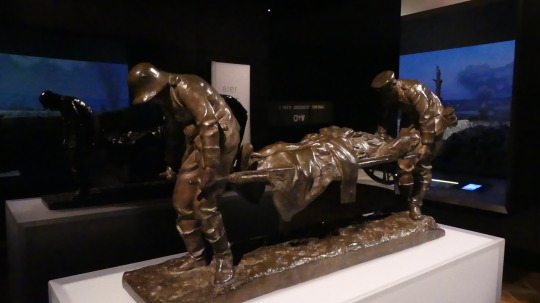
At the end of the day, I had the privilege of laying a wreath at the Last Post Ceremony. I was allowed to write my own message on the card, but I reckon I’ll keep that between myself and whoever picks up the wreaths when they eventually go away. (Where do they go, do you think? It is a mystery.) In all seriousness, it was a great honour, and one of the things I think the Memorial does very well.
Tomorrow will hopefully be a little less busy - we’ll be doing a lectorial at ANU, visiting the Uni’s memorial to the Myall Creek Massacre, and then proceeding to the National Archives. It’s been a beautiful start, and hopefully it will proceed as it has so far.
#war#first world war#second world war#boer war#vietnam war#australian army#german army#mustafa kemal atatürk#australian national university#frontier wars#unknown soldier#australian war memorial#religion
0 notes
Text
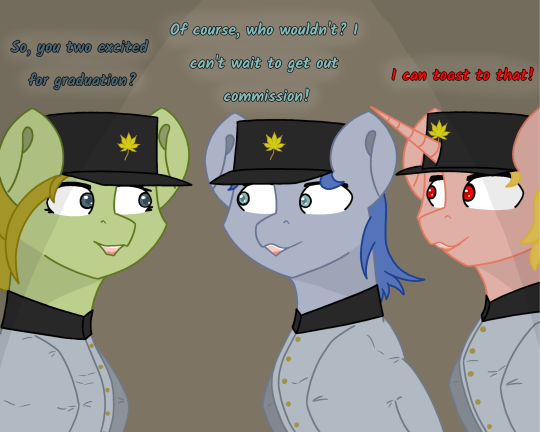
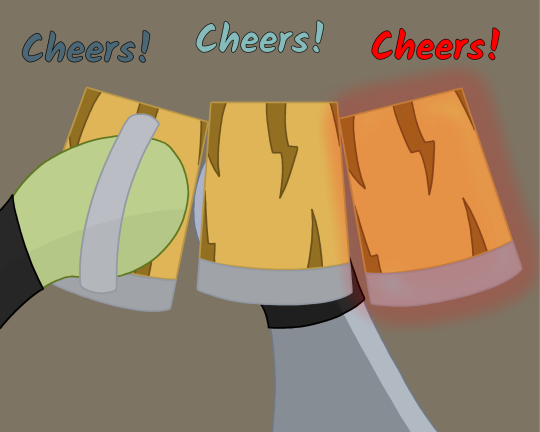
Cold Steel: Can't wait to get my nugget and become a butterbar!
---------------------------------------------------------
Chapter 1: Last Cadet Days
Part 21
---------------------------------------------------------
Guest Artist: @void-art-blog
#ask-coldsteel#Cadet Cold Steel#Blazing Dawn#Lime Light#Equestrian Grand War#Pre-war period#Imperial Equestrian Army#MLP#My Little Pony#OC#Earth Pony#Unicorn#Ask Blog#MLP Art#Digital Art
23 notes
·
View notes
Photo
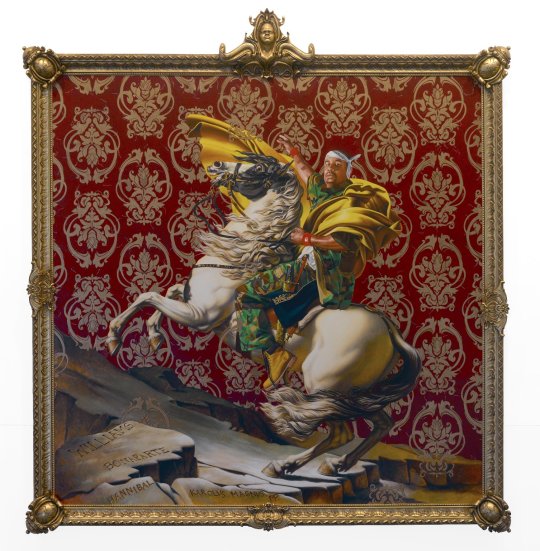
This painting is entitled Napoleon Leading the Army Over the Alps, painted in 2005 by American painter Kehinde Wiley. It comes from Wiley’s A New Republic exhibition in the Brooklyn Museum. This is possibly my favorite piece from the exhibition, though it’s a tough choice because they are all beautiful paintings. In this exhibition, Wiley reimagines famous master portraits, particularly those of famous subjects such as Napoleon, recasting the subjects as modern black models — many of which are strangers to him that he approached randomly on the street. This particular painting is a reimagining of Napoleon Crossing the Alps by Jacques Louis-David, dated 1805.
How & Why I Chose This Piece
A friend of mine attending art school told me about this exhibition and I was incredibly excited to look into it. I found that the paintings were beautiful and profound, and decided I needed to share them as my contribution to the I Object! exhibit. As stated before, this painting was my favorite. As an English major, I often find myself studying, praising, contradicting, or otherwise discussing the many “greats” in the world of literature. Every professor and student in the English department can surely provide their personal perspectives on Hemmingway, Twain, Atwood, Shakespeare, and the many other literary “greats” of history. While the department at Simmons has recently opened up its English major requirements to be more flexible and allow for broader and more diverse subject matter in classes, we still in many ways glorify and champion the old “masters”. We forgive the misogyny of Charles Dickens because we love so much his tale of two cities, and we push Ezra Pound’s antisemitism out of mind so that we can enjoy his verse.
In speaking with my friend that attends art school, I find many similarities between our disciplines, particularly in this area. The art world has its own greats, and its own masterpieces which should be looked upon by every person who ever wishes to consider themself an artist in order to fully understand and appreciate art. I know someone who quit art school because her professor told her she could never be an artist. His reason? She didn’t understand Pollock.
It is my opinion that the “masters”, in literature and in art, are not uncriticizable, and neither are their masterpieces. While Wiley’s paintings within the A New Republic exhibition depict famous paintings that I’m sure many art students would recognize, his reimagining of Napoleon Crossing the Alps stunned me; I recognized it instantly. I chose it for the recognition I felt when I saw it, and the joy it brought me upon seeing it. Napoleon Crossing the Alps has always been little more than a painting for me, albeit a famous one. This redirection of a painting that I knew, but had no particular fondness for, amazed me. I liked it better than the original. The original, a masterpiece of the 19th century, something I’ve seen a thousand times, something that would cost an inconceivable amount of money to purchase, has never impressed more than a tiny footprint in my memory. When I looked at Wiley’s piece, though, I knew it was better. Somehow, it felt that the subject was more important than Napoleon, represented more than Napoleon, and was driving a more important moment in history than Napoleon. I wanted to explore why I felt that way, and to discuss it here; especially in case someone else shared my feeling.
This Piece in the Context of Global Resistance / Rejection
While there is certainly lots of merit to objecting to mainstream narratives of classic art and reimagining pieces in a context that rejects oppressive norms, I think there is immeasurable worth in recognizing and appreciating the pieces that exist for the express purpose of resistance — the pieces whose defiance is instantly recognizable, and undeniable. Wiley’s works (especially this piece, in my opinion, though they do all work together to convey a message through the exhibition as a whole) are boldly and proudly defiant, and I think that that is well worth celebrating, so here I will do so.
Firstly, I think that it is important to explore the foundations of this painting, which come from Napoleon Crossing the Alps. In the original painting, Napoleon is situated in the same manner as the man in Wiley’s portrait. His face is calm amidst the context of war, and his arm is raised in such a way that seems to be leading the viewer more so than the troops behind him. His hand is ungloved, which can symbolize transparency, or even an intention towards peace rather than violence. He sits atop the same white horse as the man in Wiley’s portrait; it was common for royalty to be portrayed in equestrian portraits. He appears confident, powerful, brave, and wealthy. Transferring these qualities onto the figure of a black man, especially in this case, a regular black man (that is, not someone who is rich and famous, but simply a man that Wiley approached on the street) is an incredibly bold and revolutionary choice that highlights the strength, determination, and power of black men. For David to paint Napoleon with these qualities could be interpreted as propagandist or pandering (especially since Napoleon never actually led his troops over the alps, but rather took a safer route following several days behind them.) However, the same posturing to portray a man who the viewer is not acquainted with, but now feels like they are, is a revolutionary choice.
When analyzing Wiley’s work, I think some of the most interesting things to note are the deliberate changes that Wiley made from David’s original Napoleon Crossing the Alps. It is glaringly obvious, for example, that the background has changed: the original painting portrays Bonaparte against a dull mountainous background, whilst Wiley’s piece is set against a bold pattern that resembles an expensive French fabric. The painting is bordered by an ostentatious golden frame. These details appear to be somewhat humorous choices on Wiley’s part; in a way he is parodying the imperiousness of the original painting, or paintings like it that similarly glorified monarchical figures. Wiley also included tiny images of sperm throughout the background of the painting — a subtle humorous commentary on the hypermasculinity of equestrian portraiture and famous portraits depicting men, particularly those involved in battle and/or positions of power.
Furthermore, Wiley changed the dress of the subject in this portrait from Napoleon’s royal, old-fashioned garb. The man in Wiley’s portrait is wearing Timberland boots, a camouflage outfit, and a bandana, which present a modern perspective on the militaristic theme of the original portrait. Napoleon’s royal blue coat can also be seen peeking out from under the man’s camouflage shirt, and he maintains Napoleon’s golden cloak. The man’s dress demonstrates simultaneously that he is a regular, modern black man, and also that he is greatly powerful. It is also notable that, while David’s painting contains the names Hannibal and Charlemagne as well as Bonaparte (Hannibal and Charlemagne were both generals who led troops over the alps, thus placing Bonaparte’s name amongst theirs demonstrated that he deserved recognition alongside these men) Wiley includes the name “Williams” amongst these names. Though we have no way of knowing who Williams is, it is a common last name of black Americans, as many names were wiped from history with slavery and enslaved people took on the surnames of their enslavers. It can be inferred that the man in the portrait’s surname is likely Williams, or that Williams is a name that Wiley feels is representative of him. Like Bonaparte, the man in the portrait never led troops over the alps. However, Wiley has likely found him deserving regardless of being placed amongst men who have done legendary things — powerful men that are leaders and changemakers.
This painting definitely made me consider Fanon’s philosophies on violence and decolonization. I found the painting to be something that honors Fanon. The original painting comes from a violent piece of history, and it glorifies one of history’s most famous conquerors of nations on his way towards more colonization. Wiley’s reimagining of the original portrait feels like it is symbolic of the undoing of the original. Wiley’s piece is not without violence — the man in the portrait still rides a warhorse, wears garments associated with war, and gestures as though he is leading troops — however, I believe that the violence of this portrait is a representation of justified, anti-colonialist violence, as Fanon describes. Napoleon has been ripped out of his own portrait and replaced. His clothes have been taken from him and now dress a man whose ancestors were likely ripped from their homes and dragged elsewhere, while the remainder of his ancestral home was colonized by European imperialists in no way unlike Napoleon. The portrait’s humorous subtleties make a mockery of the many royal portraits that precede it. It is an unabashed reversal of colonialism as Fanon describes; it demonstrates what it looks like when “the last become the first.”
When I look at the man in the portrait’s face and manner, I can’t help but think of Fanon. Though Napoleon has the same stature in the original portrait, Napoleon Crossing the Alps sits unfeelingly with me, while Wiley’s piece strikes me like few other paintings could. The man in the portrait, whom I do not know, as he is not famous or someone I’ve learned about in history in class, is looking directly at me, and he is gesturing that I move onwards. It feels as though he is demonstrating the ways in which power must be inverted and destroyed, as though it is my turn to push some entitled white man off his horse, climb on, and join Wiley and Williams on their journey across the alps and towards decolonization.
-Steph P.
3 notes
·
View notes
Text


Members of the Imperial Equestrian Army's 41st Division (Reserve) during field exercises near Canterlot.
Featuring: @ask-jetstream
#Silver Wing#JetStream#ask-jetstream#Art#Random Art#MLP#My Little Pony#Pegasus#Two of them#Pegasi#Random Project#Equestrian Grand War#Interwar Period#Oh boy this took longer to finish than I expected#So yea#This is just a little project I've been thinking of for a while#Hoping to expand the lore over time#Also#Yes Temp I redid the art - even if you said the first one looked good XD
22 notes
·
View notes
Text
DARING DO and THE GRYPHON’S QUEST! : MLP Fan Fiction : Part 7 of 19
Return to the Master Story Index
Return to MLP Fan Fiction

DARING DO
and
THE GRYPHON’S QUEST!
by
De Writer (Glen Ten-Eyck)
and
Carmen Pondiego
Cover art by Aranel the Cyborg, now Wind the Mama Cat
29584 words
© 2020 by Glen Ten-Eyck
Writing begun 03/29/16
All rights reserved. This document may not be copied or distributed on or to any medium or placed in any mass storage system except by the express written consent of the author.
This is a Fan Fiction based on My Little Pony. Canterlot, Princess Luna and the name Daring Do are owned by Hasboro Inc.
//////////////
Copyright fair use rules for Tumblr users
Users of Tumblr.com are specifically granted the following rights. They may reblog the story. They may use the characters or original characters in my settings for fan fiction, fan art works, cosplay, or fan musical compositions, provided that such things are done without charge. I will allow those who do commission art works to charge for their images.
All sorts of fan art, cosplay, music or fictions is actively encouraged.
///////////////////////
Chapter 7. On the Way to Eagle’s Perch
The last of their expedition goods loaded onto a light two wheeled cart, Daring Do slid into the pulling harness. The three of them pacing along together, the expedition set out from Circle Lake Resort.
Rahak, taking a turn in the harness, noticed the ease with which the cart was rolling up the Royal Road leading to the town of Eagle’s Perch, the town closest to the western border of Equestria.
He asked, “Doctor Do, I served in the Imperial Army. Ever since the battle of Shattered Claw Pass, the army has trained our troops in ground combat. In spite of our preference for aerial combat and attack, it was proved that ground warfare was necessary. We have supply carts and wagons in the army. None work as well as this one. Why is that?”
Daring Do looked about at the darker pines taking over from the lower land hardwoods, up at the clouds as if they were of vast interest. She even looked at the fine, hard packed gravel of the road. The silence stretched out. At last she broke it.
“This cart is a gift negotiated from Marchhare’s Band of the Rom by Midnight and Tia. Those are the names that our Princesses use when they are visiting their family. The rumor is true, though many still want to deny it. Princess Luna and Princess Celestia join the Rom every chance that they get.
“Rom carts, wagons, and caravans are unique. It has finally been found out that they have used adjustable and replaceable bearings in their wheels for as long as there have been Rom. That, and the fact that there are no joints or fasteners used in Rom woodwork, except for replaceable hinges and locks, make Rom caravans last for centuries. That is not an exaggeration.
“The Rom still won’t say how they do their amazing woodwork. That is why this cart works so well. The Rom replaceable bearings have revolutionized Equestrian devices of all kinds. That is why this cart works so well and why the Rom still say, “As bad as a pony made wheel,” for anything that is not up to their standards.”
Grata’s crest fluttered laughter as she said, “They kept those bearings a secret for almost a thousand years? Why?”
Daring Do snickered as she replied, “At first, it was loyalty to the ancient kingdom of Gyptia, where they were a commercial secret. Later, after Gyptia fell, it was simply spite. The ponies treated them badly for being different and they returned the favor by not sharing how they did or do anything.”
They paused while Grata assumed her place to take a turn in the harness. She craned her neck back to shoot a puzzled stare at Daring Do, who had just taken a quick fire rifle from the supplies cart.
Rahak turned to scan the skies while Daring Do loaded a twenty round magazine of ammunition and chambered a round. Grata glanced back to the sky! She dropped her harness, diving for safety underneath the cart!
The crossbow bolt slammed into the road where she had been! Its impact scattered fine gravel forcefully! Daring Do’s rifle roared back!
With a scream, one of the three aerial attackers plunged from the sky! Fluttering, barely able to control his plunge, he struck thick brush, somewhat cushioning his crash to earth!
As Daring Do was bringing her rifle to bear a second time, she had to dodge! A second heavy crossbow bolt buried itself in road shoulder, throwing dirt in all directions! From her position on the ground, Daring Do got off her second shot!
With a scream of agony and rage, a Gryphon fell, dropping his crossbow in his frantic effort to avoid the hard packed stone of the road! He struck with a bone breaking crunch, bounce and roll, just on the road edge.
Rolling to her hooves, Daring Do took her time lining up her third shot. The rifle bellowed, the roar of it echoing off the nearby hills. Shattered parts of the crossbow hit the earth only slightly before the body of the last of the attackers! He fell limp, and hit a bush. His broken body did not move.
His fallen comrade began to keen a cry of despair.
Rahak went to the woods edge and pulled the wounded Twin Fires Gryphon from the brush. He was not gentle in bringing him to the wagon.
Grata had been into her personal luggage. She had on a golden crest cap and formal ribbons of office, along with a big formal knife in its sheath. Rahak cast his prisoner at her feet.
He demanded, “Grovel before the person of Grata, Left Wing of the Imperial Throne! She has the lawful power of life and death.”
He brought over the one fallen by the road far more gently. He told that one, “Your injuries excuse you from groveling before Grata, Left Wing of the Imperial Throne. She has the power of life and death.”
Daring Do was watching the whole scene with considerable interest ~ ~ And a loaded rifle.
Grata sat before the wounded attackers. “You are both accused of the attempted assassination of the Left Wing of the Imperial Throne. You have brought military grade (if obsolete) weapons into the territory of Equestria, a friendly power for that purpose. Further, you are accused of direct cowardice by your chosen method of attack.
“Before I pass a judgment from which there is no appeal, I would hear your defense. I expect that I know what it will be, but hope that you can show me wrong.”
“Puzzled, the leader of the attack, the one that had crashed in the woods, asked, “Why do you wish to be shown wrong? Is that not weakness?”
Grata shrugged her wings. “Some might see it so. I do not. I hope to find some form of honor in what you have done. Even should you be given the Long Drop, I would prefer it known that Gryphons behaved with honor. That would allow your proper burial afterwards.”
The one that had fallen by the road said, “We were told that you seek to destroy The Legends. That any means was proper to preserve The Legends.”
Grata sighed, “That, sadly, is what I did expect to hear. I will tell you now that it is not true. We are passing through the Eagle’s Vale into the Shattered Valleys beyond. We will be doing some studies in Eagle’s Vale in the hope of finding an ancient supply road.”
The leader demanded incredulously, “A supply road? What for?”
Grata answered, “What Flight Commander Rahak found in the Shattered Valleys appears to be an Early Sunlord Temple. They would not have put one where the sunrise and sunset could not be observed without a pressing reason.
“We think that it might be for the purpose of contacting Gryphons who lived in the region. They may have paid a tribute, sought advice, or both. It is to determine exactly what the complex is and what function it may have served is why Doctor of Antiquities Daring Do is along.
“She is a world renowned expert in finding and interpreting things of Antiquity.”
He spat derisively, “A Creature of Later Creation!”
Grata nodded, “Correct. One who is willing to see if she really is one or not. She can face the TRUTH of our Legends. That her kind might not be the first created. Can you? I fear not.”
His crest drooping, he inquired, “What if the thing that you find is not the temple that you hope it is? What then?”
Grata shrugged both sets of shoulders at once, her crest held in a neutral pose. “Then we still have our Legends intact just as they are now.”
Daring Do interposed, “We have good reason to think that your kind WERE influenced by the last Nightmare War. Weather was disrupted all over the whole world, bringing ruin to many civilizations and ways of life.”
She gestured to the north. “The oldest known document by any Gryphon dates to just before 54 Post Nightmare Wars. It was found in a cave almost half way from here to the north end of the Sunset range. It does mention the earliest form of your Legends and it places the Gryphons East of the Eagles. That would be the Shattered Valleys. It mentions that they were seeking a safe land to raise their chicks. The Nightmare Wars did more than simply kill ponies.” She shook her head sadly, “It was the greatest error that ponies ever made and our deepest shame. Still, we remember it for the purpose of not making such an error again.”
The leader ruminated, “Perhaps we did lose our honor with this. We did not understand that what you seek might put our Legends onto a more solid foundation.
“I wish that I could lay my apology before the Throne and beg the forgiveness of the Empress.”
Grata nodded briskly, crest up in approval. “You have sentenced yourself. I can message ahead that you are returning. Do all that can be done to save your comrade. Distort nor lie in any whit. With that, you will regain your honor, regardless of what the Empress may do. Your final fate will lie in her claws.
“You did surprise me by being willing to listen and understand. For that, I will, in my message, recommend leniency.”
The leader relaxed some, saying, “It is easy to see now why you are the strong Left Wing of the Throne. Should I remove this symbol of my failure of honor?” He pointed to his emblem of the Twin Flames.
Grata shook her head, crest set negatively. “No. You were led into dishonor but not by your belief itself. You were tricked by those who twisted it to make you their tool. Wear the Flames now in true honor, nor ever let another lead you from it again.”
Weeping in both relief and shame, the leader gathered his fallen comrade and set off down the road on foot.
Grata stowed her regalia and suggested, “Shall we be on our way?”
Daring Do put away her rifle, after clearing the action and cleaning it. As they set out, Grata taking her interrupted turn in harness, Daring Do said, “What about the dead Gryphon back there?”
Without any concern, Grata stated, “He died without honor. Let the carrion creatures have his carcass.”
Changing the topic, Daring Do offered, “That was a brilliant cover story! How did you two ever come up with all that detail?”
Rahak shrugged his wings, as he paced alongside Grata. “After you mentioned the idea back at the Circle Lake station, we just filled in with the old ruin up in the Shattered Valleys that we use for a way marker when we do recon flights over the area. I assume that Grata saw it in our reports which all mention it if we are covering that area.”
Grata nodded, crest up jauntily, “The rest was politics. I simply fed them a base that you gave us combined with the fulfillment of their own wishes.”
Daring Do regarded the two intently. “There really IS a ruin up there in the Shattered Valleys?”
Rahak, crest fluttering in laughter, snorted, “Well, our expedition just changed! I should have known better than to mention ruins to an Antiquarian!”
<==PREVIOUS NEXT==>
Return to the Master Story Index
Return to MLP Fan Fiction
#DARING DO AND THE GRYPHON'S QUEST!#Part 7 of 19#MLP Fan Fiction#Written by De Writer and Carmen Pondiego
7 notes
·
View notes
Text
EUMini: Techs, Units, Institutions, Ages
I think one of the best things they added to EU4 was the Institution system, since institutions can begin to mimic the way real technologies gradually disseminate through the world based on the actual material and political circumstances of different states and cultures; and one of these days, I’d like to try to mod EU4 so that the Institutions system supported the entire tech tree, instead of just being one supporting part of it.
Today, for better or worse, is not that day.
The mod has fifteen basic tech levels (using the standard linear tech system), and all nations--which all belong to the same tech group--start at level zero in all three categories. The on-time dates for each tech fall every 25 years, starting in 1175.
The goal with the modded technologies is that each should be fairly consequential. For almost every admin tech, for instance, you get, at minimum, a building and an idea group. The major techs will last you to 1425, which is nearly 400 years. After that, there are eleven “repeatable” techs that give small generic bonuses and have generic names.

You can see the repeatable techs in the way the land morale bonuses are distributed here--they become small and crop up at every tech level starting at tech 16.

The repeatable techs are to enable you to play past 1450 or so if you like; the mod’s end date is 2000.1.1, but I consider the actual “historical” period it covers to be 1062 to 1450 or so.
As all countries belong to the same tech group, all countries naturally have access to the same units. As in base EU4, the time period being covered marks the introduction of early firearms to the development of more sophisticated ones, while at the same time earlier martial (and especially noble-equestrian) military traditions are in decline, under the pressure of an expanding infantry-based army.



I think one of the major weaknesses of EU4 is the inability to deploy diverse unit types at the same time; you’re limited to one infantry regiment type, one cavalry regiment type, and one artillery regiment type, which means you can’t switch between (say) defensive and offensive units as the tactical situation warrants. That’s one reason I haven’t put too much effort into diversifying the unit types; instead, they just tend to accumulate more pips as your military technology improves.
(There are new ship types, too, but no neat in-game way of displaying them. There are only 4 tiers of ship, and their stats are essentially equivalent to the last 4 ships of each type in the base game, though.)
Institutions function in the same way as the base game, though I have altered and goosed the modifiers associated with each age. There are five institutions now--Sovereignty & Autocracy, which starts spawned in the northwest; Religious Law, which will spawn about 1080; Urbanization, which can spawn after 1170; Natural Philosophy, which can spawn from 1250; and Imperialism, which can spawn from 1350. The last three are each associated with the beginning of a new Age.

^ That’s the starting distribution of the first institution.
The four ages are the Age of Invasions (starting), the Age of Princes, the Age of Invention, and the Age of Strife. Most salient is the fact that no age has country-specific abilities; any country can acquire all 11 abilities, and like the base game, each age has a strong theme to it. The Age of Invasions is based on small-scale warfare and consolidation, and inherits a few of the Age of Discovery’s age abilities (stealing vassals and claims-on-claims); the Age of Princes is based on diplomacy and economic development; the Age of Invention is based on technological dynamism and government flexibility; and the Age of Strife is based on large-scale empire building and land warfare. Unlike the base game, Absolutism never kicks in: because the map is so small, having massive late-game blob potential would, well, end the game rather abruptly, I think. Instead, the Age of Strife primarily boosts army size and manpower recovery speed, meaning you can stay in the fight longer, or get back in it sooner.
Here’s a view of the first Age screen, whose art, as I’m sure you can tell, I’ve lavished an enormous amount of time and attention on:
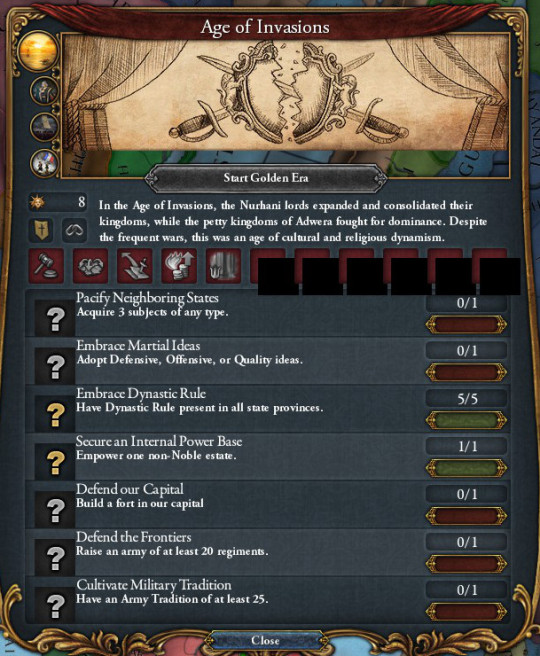
#eu4 modding#eu4#europa miniversalis#the one thing i am not is an artist of any kind#but i am gonna at least make it look less broken#...at some point
12 notes
·
View notes